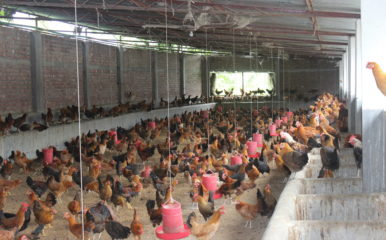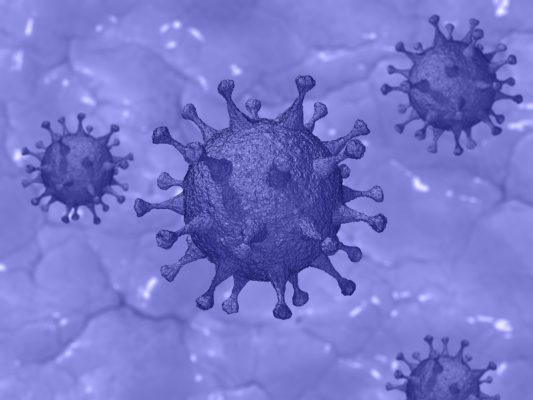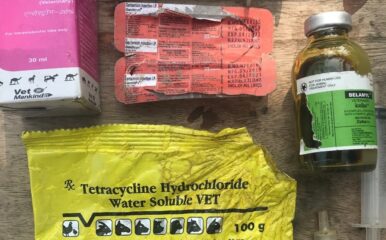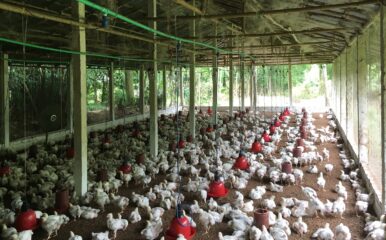
Collaborative work to understand COVID-19 transmission dynamics
Published on 24/03/2022

Pete Linforth/ Pixabay
Many of the questions we want to address about emerging infectious diseases in poultry in the One Health Poultry Hub directly relate to understanding COVID-19 transmission. For example, was the outbreak the result of a single virus introduction or multiple independent incursions? Are some populations more likely to act as sources of infections, and why? Answering these questions will help improve our knowledge about how the disease spreads, which is essential for designing effective strategies to mitigate risk in the future.
For rapidly evolving viruses such as avian influenza viruses and SARS-CoV-2, we can analyse virus genomes sampled over an epidemic to gain insights into their underlying transmission dynamics. In particular, how viruses disseminate in the population strongly influence patterns of genetic variation observed in sampled virus genomes.
This approach is better known as ‘phylodynamics’, which provides a powerful way to understand virus transmission from a small proportion of sampled infections.
A collaborative study
Using this principle, Hub partners in India and the UK undertook a collaborative study to understand the early transmission dynamics of COVID-19 in Gujarat, India. We analysed 434 virus genomes generated by the Gujarat Biotechnology Research Centre and case data from the first epidemic wave. We worked with other scientists in Edinburgh, Imperial College and Oxford to reconstruct the epidemic dynamics and spatial spread of SARS-CoV-2 in Gujarat.
The epidemic primarily affected Gujarat’s three most populous districts (Ahmedabad, Vadodara and Surat). In particular, Ahmedabad accounted for the highest number of cases, where the outbreak progressed more rapidly than other regions. This observation is likely explained by Ahmedabad being a central travel hub in Gujarat, both regionally and globally.
Virus introductions and spread
The phylodynamic investigation indicated at least 100 separate virus introductions into Gujarat. This finding was particularly notable given the relatively small sample size, suggesting this number was likely higher. In other words, the epidemic corresponded to multiple (>100) epidemics of varying sizes.
Furthermore, similar to what we found in the UK epidemic, earlier virus introductions were associated with a higher number of Gujarat genomes, indicating the timing of virus introduction is influential in determining the extent of onward spread. That is, viruses imported into Gujarat earlier had more opportunity to spread than viruses introduced later.
What were the sources of virus introductions in Gujarat? Our analyses found that virus introductions were greater from outside India than from other Indian states, which points towards international travel being a key source of virus infection during the early stage of the pandemic, a pattern observed globally.
After the introduction of the virus, what factors influenced its spread within Gujarat? To answer this question, we selected seven of the largest introductions or transmission lineages , which were characterised by the highest number of Gujarat genomes. For this analysis, we integrated epidemiological and demographic data into our phylodynamic investigation. This revealed that virus dissemination occurred more intensely between districts that were geographically closer and predominantly from districts with higher population density to districts with lower population density.
Together with the epidemiological findings, these results suggest that virus transmission was concentrated in exports from urban centres, which had higher caseloads and population densities, to nearby districts. Initially, Ahmedabad was likely a significant source of virus exportation but at later stages, also Surat and Vadodara as the epidemic grew in these regions.
The spatial context
Our work highlights the importance of understanding the spatial context of SARS-CoV-2 spread, which could help inform disease control strategies. For example, focus interventions on populations with high disease prevalence and expanded to include geographically proximate populations to limit onward transmission.
Particularly, more coordinated, responsive approaches at the local level could prevent travelling waves of infections without the need for national lockdowns. This is also important for predicting future epidemic progressions in case of other SARS-CoV-2 variants like Omicron where the initial strategies focused on screening and isolating suspected patients from airports. However, this strategy would require an improved understanding of multi-scale mobility patterns across India and elsewhere to better respond to such epidemics.
The work undertaken in this paper by One Health Poultry Hub co-investigators also highlights the importance of global collaboration to tackle current and future pandemics. Interdisciplinary research is going to be a major factor for addressing global challenges and evolving as one global research community.


